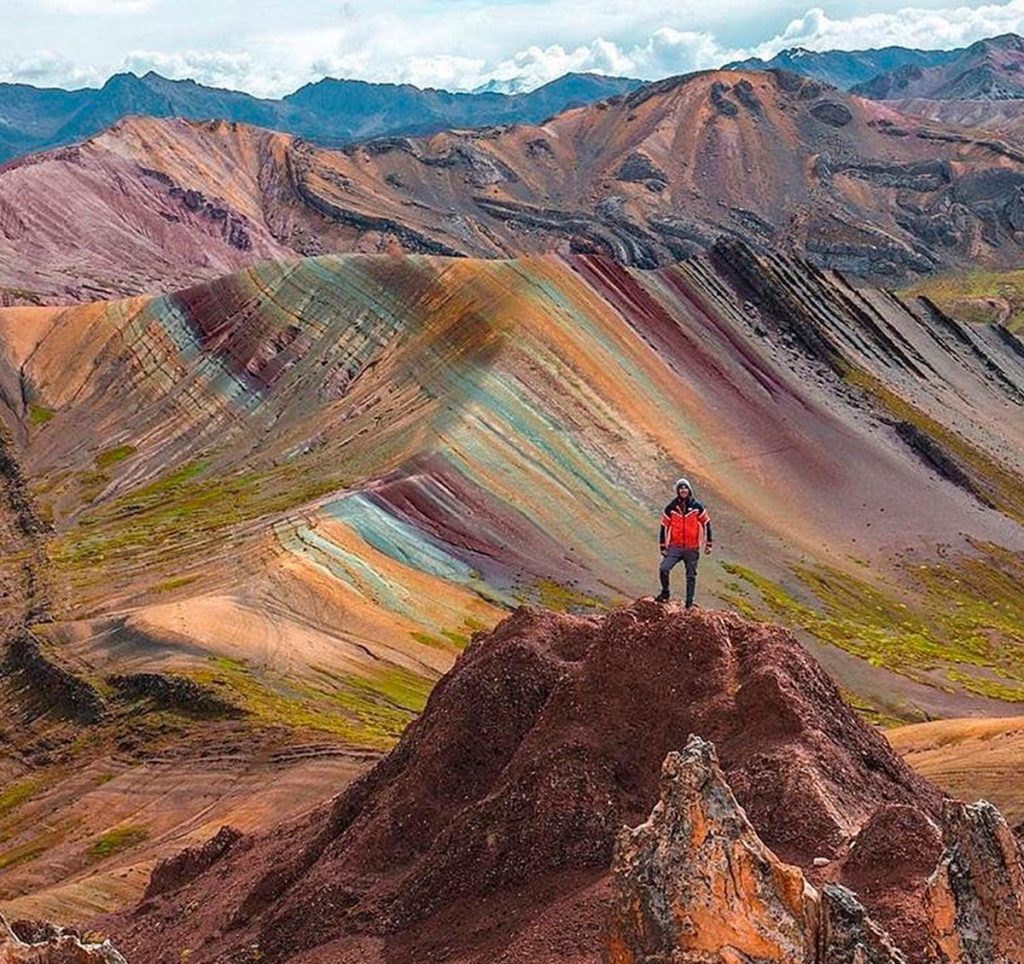


As a result, the experience will be safer and far more pleasant.

Not only will you arrive far earlier than those making the day trip from Cusco (meaning you’ll have significantly better photos with fewer tourists crowded in them), by camping overnight at altitude, you’ll already be far better acclimated to the trail. To best negate both of these, a two-day trek to Rainbow Mountain, including a night camping in splendid Andean scenery nearby, is a great alternative.

Consider hiking to Rainbow Mountain on a two-day tourĪs we’ve seen, the main issues surrounding a tour of Rainbow Mountain is the environmental impact of tourists and the safety concerns of the altitude.While this means you no longer need to walk as far to reach the all-important viewpoint, this has also allowed even larger vans and buses – bringing even more tourists – to park on the mountain.Īs a result, a perfect storm of more visitors all taking the same path, and little to no environmental management by the local people has placed enormous pressure on this extraordinarily fragile location.īefore you book, here are four things you should be thinking about for your tour to Rainbow Mountain. A wetland that was once an important habitat for wild ducks was recently turned into a vast parking lot the size of five soccer fields. In fact, reports suggest that many parts of the path have fully collapsed, causing it to be rerouted and therefore even further degradation of the terrainīut it’s not just hikers who are unintentionally leaving their mark. Trekkers report how the constant movement of visitors piling onto the mountain has widened the trail to 10, even 20 meters at points, thus damaging the fragile vegetation that once lined the path. Traffic along the 4 km (2.5 mi) Rainbow Mountain trail causes significant erosion to what is still – and should be – a pristine, undamaged natural environment. To put this into perspective, that’s around a third of the number of visitors to the significantly larger site of Machu Picchu. The environmental impact of your Rainbow Mountain tourĪs of this year, 1,500 hikers reportedly hike the trail to the viewpoint for Vinicunca each and every day. As temperatures in the Andes and across the globe have increased, the snow has melted, revealing the mountain in all its glory.īut the impact of humans – aka tourists – poses the biggest threat to this once pristine destination’s future. Until around 2013, the mountain’s vivid kaleidoscope of colors was buried year-round beneath a layer of snow. The mountain itself is a legacy of climate change. These were caused by the oxidation of the mineral deposits left here millions of years ago, which have since been exposed to the air thanks to the movement of tectonic plates.Īlthough the international press has waxed lyrical about the destination, and heavily promoted this candy-striped mountain over the past five years, few have stopped to consider the damaging, and ultimately threatening, impact of increased tourism to the area. This rainbow hill looks like something out of a dream, thanks to its shocking striations of color. It forms part of the Vilcanota mountain range, which is best known for being home to Apu Ausangate, a mountain revered by the local Quechua population and one of Peru’s highest.īut Rainbow Mountain is now far more famous than Ausangate. Vinicunca, aka Rainbow Mountain, is located 138 km (86 mi) southeast of Cusco in the province of Quispicanchis. Why you need to think twice before booking a Rainbow Mountain tour


 0 kommentar(er)
0 kommentar(er)
